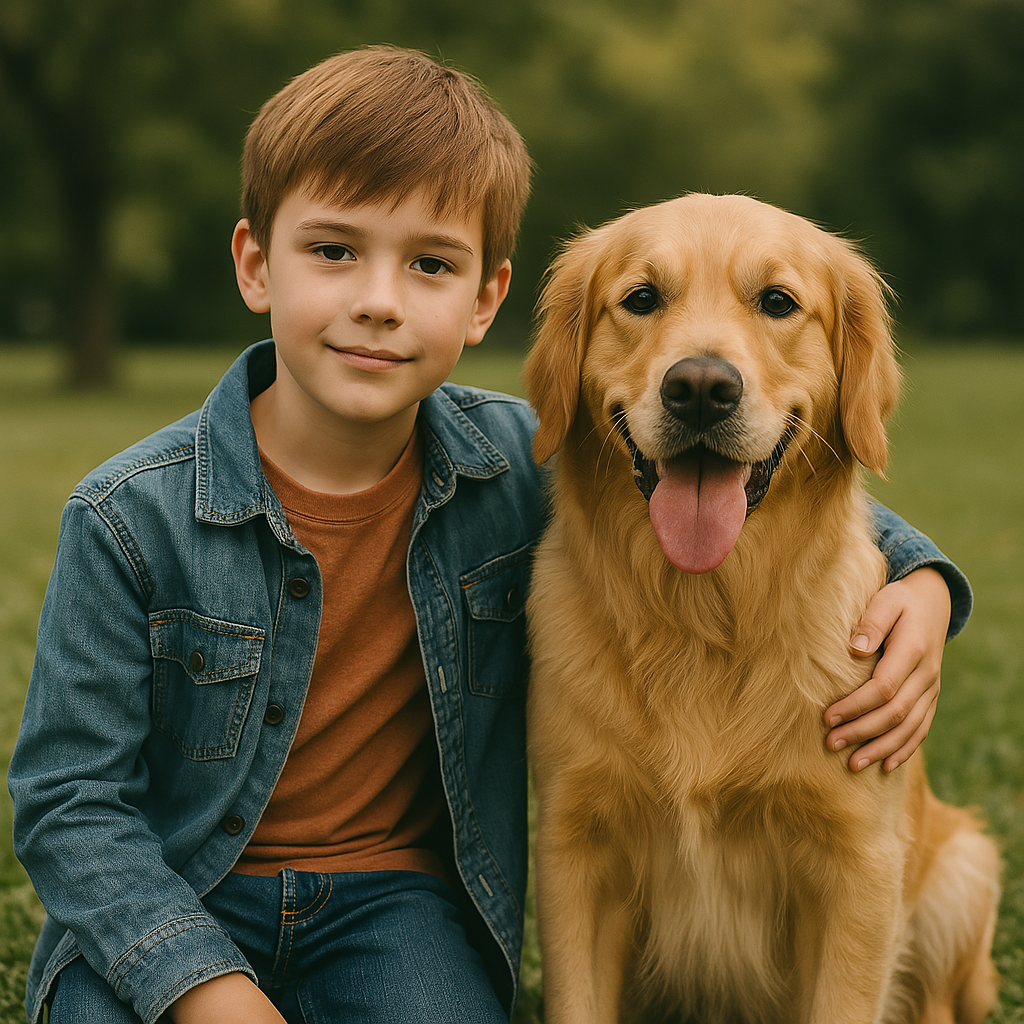
Ten-year-old Leo wasn’t like other kids. While they traded Pokemon cards and boasted about video game scores, Leo carried a different kind of treasure: Buster, his scruffy, caramel-colored terrier mix. Buster wasn’t just a pet; he was Leo’s confidante, his shadow, his best friend. And, much to the amusement and occasional consternation of his teachers and classmates, Buster was also a daily fixture at Maplewood Elementary.
Leo’s devotion to Buster began three years prior, a poignant moment etched in his memory. His grandmother, a woman whose love for animals was as boundless as the ocean, had gifted him Buster, a tiny ball of fur barely able to stand. From that moment, an unbreakable bond was forged. They were inseparable. They slept together, ate together (Buster, of course, ate dog food, while Leo enjoyed peanut butter sandwiches), and played together, their laughter echoing through the quiet corners of Leo’s backyard.
The idea of leaving Buster at home while he attended school was simply unthinkable to Leo. The separation anxiety, for both boy and dog, was palpable. The first day of school without Buster was a disaster. Leo was withdrawn, his usually bright eyes clouded with a persistent sadness. He struggled to concentrate, his mind plagued by images of Buster alone in the house. His teacher, Ms. Periwinkle, a kind woman with a penchant for lavender-scented lotions, noticed his distress.
After a heart-to-heart conversation, where Leo poured out his feelings about Buster with a raw honesty that touched Ms. Periwinkle deeply, a compromise was reached. Buster, a remarkably well-behaved dog, would be allowed to accompany Leo to school. This wasn’t without its challenges, of course. The school’s initial reaction was a mixture of surprise and apprehension. The principal, Mr. Henderson, a stern but ultimately fair man, was initially hesitant, citing school regulations and potential health concerns.
However, Ms. Periwinkle, backed by Leo’s heartfelt plea and Buster’s surprisingly impeccable behavior during a trial run, managed to convince Mr. Henderson to grant an exception. Strict guidelines were implemented: Buster had to be kept on a leash at all times, he was restricted to the school grounds, and Leo was solely responsible for his care and cleanliness. A designated quiet area near the library was set aside for Buster’s rest periods. Furthermore, Leo committed to ensuring Buster wouldn’t disturb other students or interfere with classroom activities.
The news spread like wildfire through the school. Initially, there were whispers and giggles, some students openly expressing their dislike of having a dog on school grounds. However, Buster’s gentle nature and Leo’s unwavering responsibility soon won over even the most skeptical hearts. Buster became a calming presence, a furry friend who listened patiently to whispered secrets and offered comforting nudges with his wet nose.
Children who were initially afraid of dogs gradually warmed up to Buster, learning to respect his space and interact with him gently. Shy children found comfort in his quiet presence, their anxieties easing as they petted his soft fur. Even Mr. Henderson, initially resistant, found himself smiling at the sight of Buster patiently waiting by Leo’s side during recess.
Buster’s presence had an unexpected positive impact on the classroom dynamic. He became a catalyst for learning, inspiring writing assignments about pets and nature, fostering discussions about responsibility and empathy. The children learned about canine behavior, hygiene, and responsible pet ownership, indirectly expanding their curriculum beyond textbooks and worksheets.
Of course, there were occasional mishaps. A misplaced leash, a dropped water bowl, a playful bark that momentarily disrupted a lesson – but these were minor incidents quickly resolved with Leo’s quick thinking and apologetic demeanor. His dedication to ensuring Buster’s good behavior proved his maturity and responsibility, qualities that impressed his teachers and classmates alike.
Leo’s story became a testament to the power of unconditional love and unwavering loyalty. It demonstrated that sometimes, bending the rules can lead to unexpected positive outcomes. The school, initially hesitant, embraced the unique dynamic Leo and Buster brought to their community. The boy and his dog, once viewed as an anomaly, became an integral part of Maplewood Elementary, a heartwarming reminder that the purest forms of companionship often transcend societal norms. The bond between Leo and Buster was a beautiful story unfolding day by day, a living lesson in love, responsibility, and the undeniable magic of a boy and his dog.